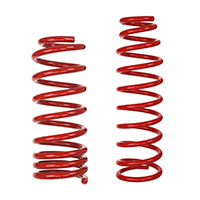Do Stop-Loss or Limit Orders Protect You Against Gaps?
IG International Limited receives services from other members of the IG Group including IG Markets Limited. We do not manage client funds or hold custody of assets, we help users the value of currencies base and counter currency connect with relevant financial advisors. Gordon Scott has been an active investor and technical analyst or 20+ years.
What Is a Limit Order in Trading, and How Does It Work?
The rule temporarily halts trades in individual security outside specified price bands. The edges of the price bands are pegged as percentage variations from the estimating the positioning of trend followers security’s average trading price during the previous five minutes. Both limits down and limits up actively prevent trades in NMS securities from occurring outside of the previously mentioned price bands. Generally, in either direction, the limit is set as a percentage of the market price of the securities at hand. The primary benefit of a stop-loss order is its ability to provide downside protection, allowing investors to set predefined exit points and manage risk effectively.
These can range from a trading halt as short as five minutes to one that lasts for the remainder of the day. Some rules permit trading to continue with limit down as the minimum price. Limit down measures the decline from a reference price, usually but not always the prior session’s closing price. The limit down is typically expressed as a percentage of the reference price, but occasionally in absolute terms as a dollar value. If a stock’s price moves to the price band but doesn’t move back to the original price band within 15 seconds, the stock will stop trading for five minutes.
Should the stock fall below that price the trader can begin buying the stock. The order will remain open until the stock reaches the PM’s limit or the PM cancels the order. There are various times to use a limit order such as when a stock is rising or falling very quickly, and a trader is fearful of getting a bad fill from a market order. Additionally, a limit order can be useful if a trader is best binary options strategy compounding beginner winning not watching a stock and has a specific price in mind at which they would be happy to buy or sell that security.
Understanding Price Gaps
If the price of the stock or futures contract falls by 10% or more from the reference price, trading will be halted for a specified period, usually a few minutes. This pause allows market participants to absorb the information, reevaluate their positions, and prevents panic selling or buying. Limit Up-Limit Down is a procedure for reducing volatility by halting trading in individual securities when prices exceed bands. The price bands are based on the company size, stock price and time of day and may vary from 5% to 150% and below the previous closing price.
We have not established any official presence on Line messaging platform. Therefore, any accounts claiming to represent IG International on Line are unauthorized and should be considered as fake. Please ensure you understand how this product works and whether you can afford to take the high risk of losing money.
Understanding Limit Up
Common gaps depict a price jump reflecting the natural ebb and flow of the market. Breakaway gaps signify the onset of a new trend, usually emerging after a consolidation period that aren’t going to be talked about in this article as it usually indicates a gap up. Runaway gaps indicate a continuity of an existing trend, highlighting sustained momentum. Investopedia does not provide tax, investment, or financial services and advice.
Limit Up-Limit Down stops trades from taking place outside a specific range, either up or down, from the average trading price during the previous five minutes. It does this by halting trading in a stock or other security when a bid or offer price touches the upper or lower edges of the band. It may be extended further, in 5-minute increments, if the out-of-band orders are not canceled or executed. Since enacted, the SEC has made various regulatory changes to ensure that trades do not occur outside the price bands and any pauses in trade are honored. Before this process was instituted in 2011 (following extreme market volatility that occurred in May 2010), there was no five-minute trading pause.
- Price gaps, those noticeable disparities between the closing and opening prices of an asset in consecutive trading sessions, arise due to various factors.
- The causes behind price gaps are diverse, encompassing everything from economic indicators and corporate earnings reports to geopolitical events and unexpected market news.
- As you can see, if you are worried about a gap down in price, you may not want to rely on the standard stop-loss or limit order as protection.
- Limit down, by contrast, refers to the maximum permitted decline in one trading day.
Markets
The length of the trading halt starts at 15 seconds and may extend to five minutes or more. Investors often shy away from stock market investments due to significant price gaps, where a stock can open substantially lower than its previous close. Put simply, limit down refers to a price threshold below which trading in a particular market or exchange is temporarily halted or suspended. It acts as a circuit breaker to control excessive market volatility and protect traders and investors from huge losses.
Limit Up-Limit Down is a volatility control measure approved by the Securities and Exchange Commission as a pilot program in 2012. The rule was a reaction to the exceptional market volatility that accompanied the 2008 financial crisis. U.S. stock markets were halted for 15 minutes after a 7% intraday drop in the S&P 500 index on four occasions during the sell-off sparked by the COVID-19 pandemic in March 2020.
A market order deals with the execution of the order; the price of the security is secondary to the speed of completing the trade. Limit orders deal primarily with the price; if the security’s value is currently resting outside of the parameters set in the limit order, the transaction does not occur. Despite benefits, stop orders have limitations including potential slippage in low liquidity or after-hours trading. Your stop order may turn into a market order depending on the price of your order and gap. Regardless of the type of order placed, gaps are events that cannot be avoided. A common strategy is to use stop-loss or limit orders as protection to mitigate the impact of the gap.
Limit Down: Definition and How It Works for Stocks and Futures
The Limit Up-Limit Down rule and the S&P 500 circuit breakers were adopted after the 2010 “flash crash,” which saw the S&P 500 drop nearly 9% at the intraday lows of May 6, 2010. So the next time you come across the term “limit down,” you’ll have a clear understanding of its definition and the role it plays in the world of finance. IG accepts no responsibility for any use that may be made of these comments and for any consequences that result.
The information is presented without consideration of the investment objectives, risk tolerance, or financial circumstances of any specific investor and might not be suitable for all investors. Limit down, by contrast, refers to the maximum permitted decline in one trading day. Both limit up and limit down prices are examples of circuit breakers—interventions employed by exchanges to help maintain orderly trading conditions. Limit Down is a term used in commodities trading to refer to the maximum amount by which the price of a commodity is allowed to fall in one trading day.







